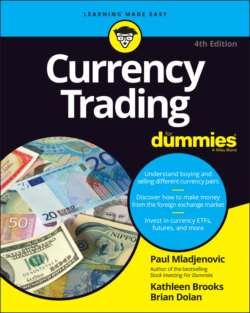Читать книгу Currency Trading For Dummies - Kathleen Brooks - Страница 32
Trading in the Asia-Pacific session
ОглавлениеCurrency trading volumes in the Asia-Pacific session account for about 20 percent of total daily global volume, according to the 2019 triennial BIS survey. (BIS, by the way, is the Bank for International Settlements, and the survey can be found at www.bis.org.) The principal financial trading centers are Wellington, New Zealand; Sydney, Australia; Tokyo, Japan; Hong Kong; and Singapore. (A session is a trading period, or trading hours, for a given global region. There are three sessions, or sets of trading periods/hours: Asia-Pacific, European, and North American.)
News and data reports from New Zealand, Australia, and Japan hit the market during this session. New Zealand and Australian data reports are typically released in the early morning local time, which corresponds to early evening hours in North America. Japanese data is typically released just before 9 a.m. Tokyo time, which equates to roughly 7 or 8 p.m. ET. Some Japanese data reports and events also take place in the Tokyo afternoon, which equates to roughly midnight to 4 a.m. ET.
The overall trading direction for the NZD, AUD, and JPY can be set for the entire session depending on what news and data reports are released and what they indicate.
In addition, news from China, such as economic data, interest rate changes, and official comments or currency policy adjustments, may also be released. Occasionally as well, late speakers from the United States, such as Federal Reserve officials speaking on the West Coast of the United States, may offer remarks on the U.S. economy or the direction of U.S. interest rates that affect the value of the U.S. dollar against other major currencies.
Because of the size of the Japanese market and the importance of Japanese data to the market, much of the action during the Asia-Pacific session is focused on the Japanese yen currency pairs, such as USD/JPY and the JPY crosses, like EUR/JPY and AUD/JPY. Of course, Japanese financial institutions are also most active during this session, so you can frequently get a sense of what the Japanese market is doing based on price movements.
For individual traders, overall liquidity in the major currency pairs is more than sufficient, with generally orderly price movements. In some less liquid, non-regional currencies, like GBP/USD or USD/CAD, price movements may be more erratic or nonexistent, depending on the environment. With no Canadian news out for the next 12 hours, for example, there may be little reason or interest to move that pair. But if a large market participant needs to make a transaction in that pair, the price movement may be larger than normal.
